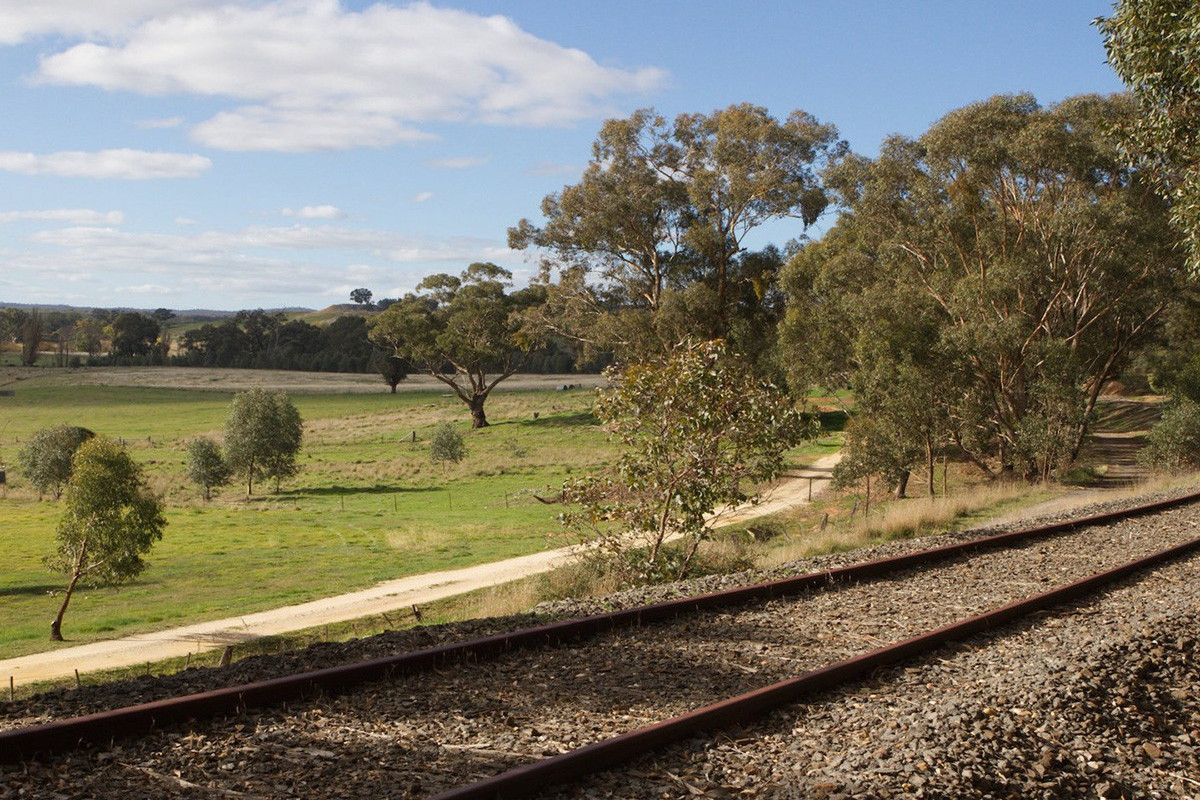Council & Business
1 April, 2024
Tourism “the future” for Central Goldfields as rail trail is backed by local government
The proposed Castlemaine Maryborough Rail Trail (CMRT) has secured a considerable funding commitment of $80,000 — putting it on track to potentially receive four times that amount if backed by a State Government grant. Both the Central Goldfields...

The proposed Castlemaine Maryborough Rail Trail (CMRT) has secured a considerable funding commitment of $80,000 — putting it on track to potentially receive four times that amount if backed by a State Government grant.
Both the Central Goldfields Shire and Mount Alexander Shire councils have agreed to support CMRT by contributing $40,000 each, over the next two years.
At last week’s meeting, local councillors voted in favour of pledging $20,000 from its 2024-2025 budget and the remaining half from the following year’s budget.
This motion to finance the project was introduced by Cr Grace La Vella, and went against the recommendation stated in the officers report tabled at the meeting.
Council should note, the report said, “its limited financial capacity to support [CMRT’s] request, due [to] short, medium and long-term financial implications”.
However, according to Cr La Vella, it was an “extraordinary opportunity” — something that will uplift the shire’s economy once developed.
“Tourism is the future of this shire,” she said.
“Rail trail tourism is a new economic stimulus for rural regions. Look at other shires, the Bass Coast Rail Trail for example, the economic value for them is enormous.
“There’s 70 letters of support [for CMRT] — from two federal parliamentarians, two state parliamentarians, the Bendigo Regional Tourism Board, most sporting clubs, most schools and a raft of businesses.
“What is the cost long term if we deny ourselves this opportunity, what will be the reputational damage to council? Can we afford to take that risk? Our job as councillors is to look ahead with a long term vision, and make the hard decisions, enabling us to progress economically into the future.”
Citing resourcing constraints as a factor for recommending against committing to additional funding, the officers report said that in the long run, there would be “potentially unsustainable expectations for council” in relation to various associated costs including maintenance and renewal.
Responding to these concerns, Cr La Vella suggested there would be other avenues available for required capital.
“Maintenance costs won’t be incurred until at least 2029, as this is the absolute earliest the trail will be built — costs can be offset and this, from talking to many is the way to go,” she said.
“Development in other shires show that business models have been rolled out across Australia and overseas to cover not only maintenance costs but upgrades and enhancements.
“Other trails secure grants from state governments for maintenance and federal MPs’ departments have indicated there are grant opportunities for construction and offsets for tourism.”
Also in favour of the motion, Cr Geoff Lovett said although he understood the report’s position on the matter, he believed supporting CMRT was not without merit.
“[It] is a very exciting proposal that will bring undoubted significant tourism benefits,” he said.
“I’m [also] really conflicted. Involvement in this program comes with ongoing implications for both the finances and resources of council. [We] have just commenced the 2024-25 budget process and it’s clearly obvious that we are facing significant financial constraints. [Eight] years of rate capping have finally caught up with us and this has seen our reserves disappear.
“I’ve weighed up all these factors and having said what I’ve said — there is a saying that you have to be in it to win it and quite honestly, I’ve come to the conclusion that we need to be in the game [so] I will be supporting this proposal.”
Although most councillors were in agreement, Cr Gerard Murphy, while acknowledging the advantages of the CMRT, said it could be prudent to hold off on funding following the project’s inclusion in the World Heritage Bid Masterplan.
The report tabled at the meeting also featured a similar argument — “activation of the Master Plan will identify and provide a better business case for further investment including the substantial amount required for the implementation of the CMRT.”
This “activation” is expected to take place four years from now, in around 2028.
“I do support the [rail trail], I think it’s a great idea,” Cr Murphy said.
“This rail trail will be a part of [the World Heritage Bid] and we’re going to have a much stronger way of getting grants. [So], why do we need to put the $40,000 in now over the next two years when the outcome will happen with the [listing].”
In her right of reply, Cr La Vella said it was important to take action now, instead of waiting longer.
“I do believe we have a tight budget, that’s without saying, but we cannot afford to let something that will enhance our economic dollar [go],” she said.
“The World Heritage Bid, to me, that’s a hypothetical [at the moment]. But we have got something now that we can hook, put our hat on and work towards.
“The business case has [already] been done for CMRT, they’ve got project and management plans — I cannot understand why [any] councillor would be against this motion.”
Having now received funding confirmation from the two councils, CMRT’s total tally sits at more than $100,000, which could multiply to $500,000 if the committee is successful in its application to the State Government’s Enabling Tourism Fund 2024.
According to CMRT Incorporated president Janice Simpson, the groups needs half a million dollars to complete several tasks ahead of construction.
“We are extremely happy with the councils’ decision,” she said.
“There’s nine mini projects within the entire project — we’ll need to undertake a cultural heritage study, an ecological assesment, negotiate an operating model with councils, landholder consultations, and lease arrangements, among other things.
“I’m glad we’re moving closer to achieving those projects now.”